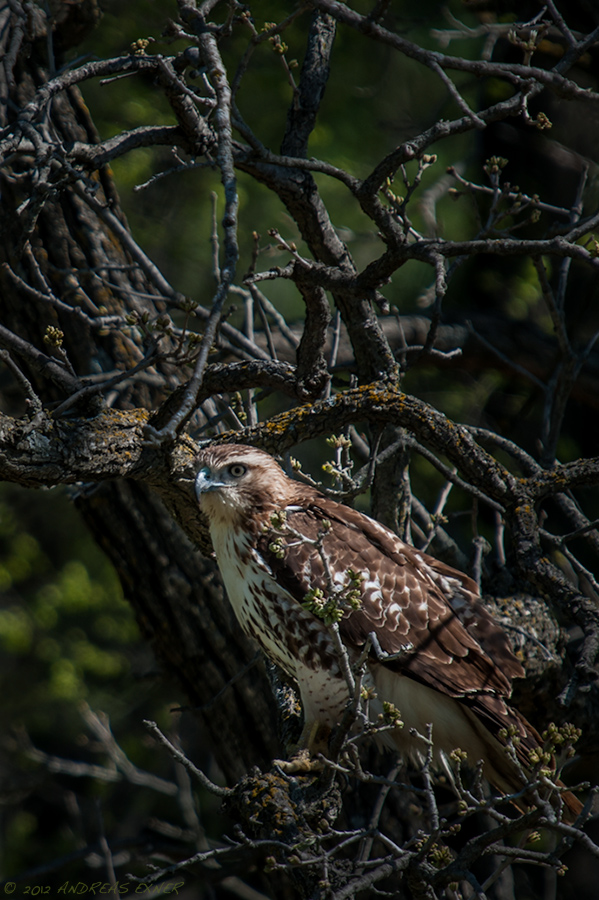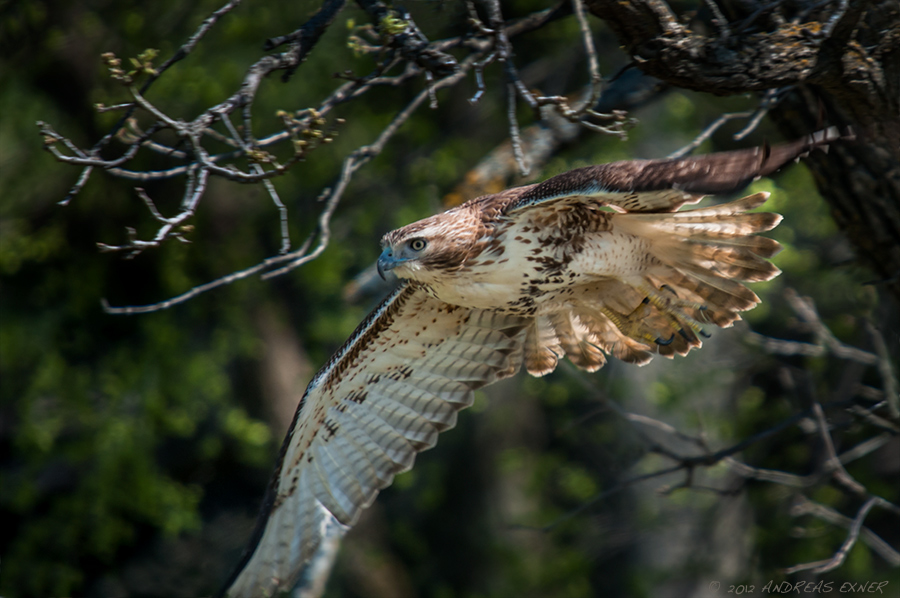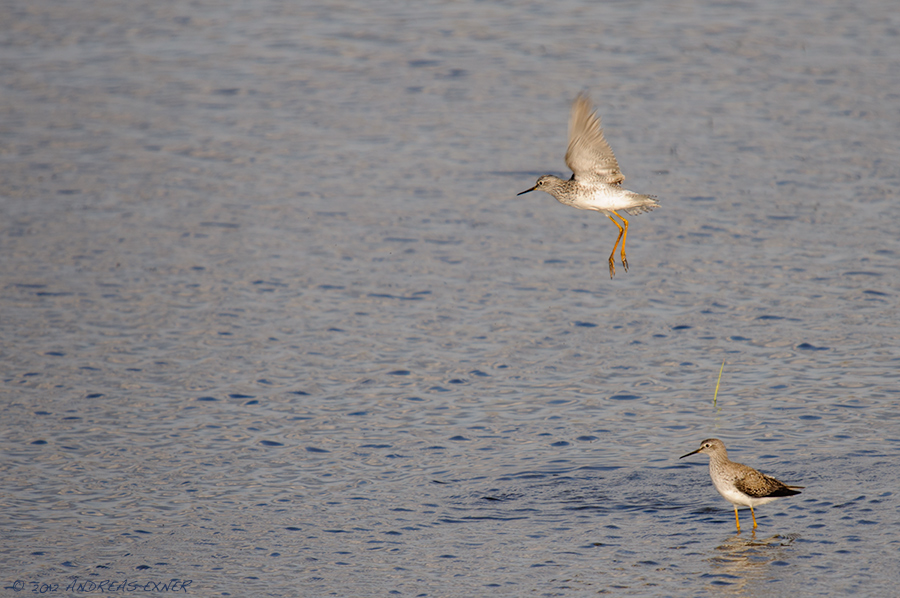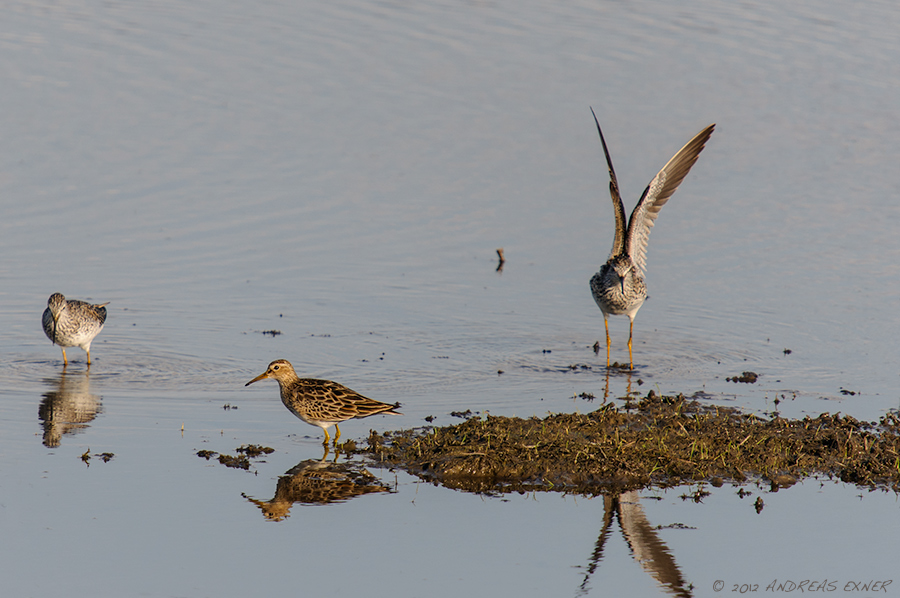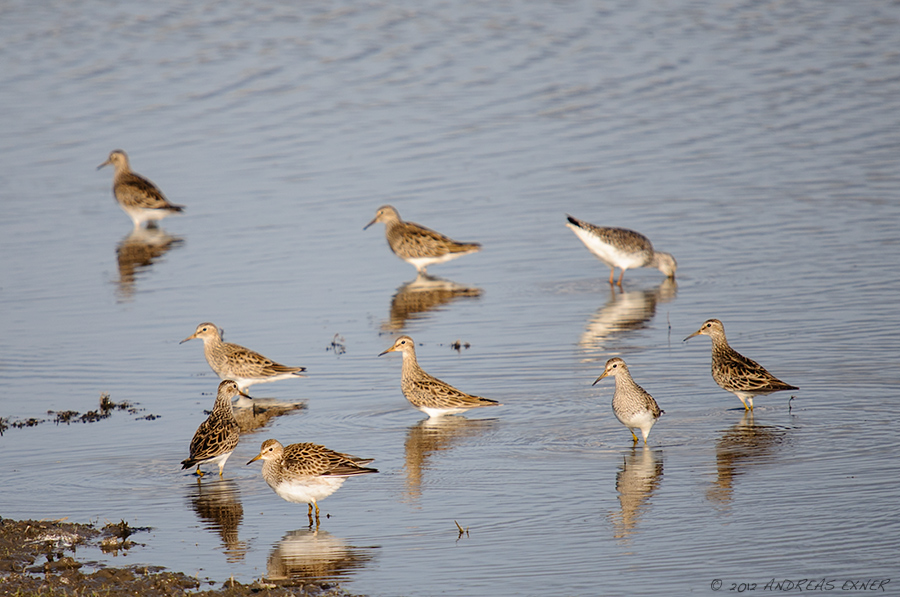
- Nikon D300s, Sigma 50-500mm / f4.5-6.3 APO DG HSM
Another animal I have seen before but never had a chance to make a picture of is the Bullfrog (Rana catesbeiana). Yes, that is the guy who provides the frog legs for restaurants… It is the largest frog native to the United States. Bullfrogs need water that is deep enough to support tadpoles through the winter. Here in Iowa they require two years for their tadpoles to develop. Further south they need only one year for their development. Bullfrogs feed on insects, fish, snakes, other frogs, and even small birds. Oh yes, they have a big mouth...
This photo was not easy to make. The light was extremely harsh and bright. The water surface reflected the sky like a mirror. I dialed in -2EV exposure compensation and approached the frog slowly from the side, close to the water level. I tried to find an angle that would allow to eliminate at least some of the reflections. As you can see I found the right angle but I had no chance to get rid of the reflection on the Bullfrog's skin. How about a polarizer? Well, I don't have one with 86mm diameter that would fit the Sigma 50-500. And I'm not planning to buy one either. Loosing up to two stops of light with a lens that starts at f/6.3 @ 500mm is not really an option for me.
I'm happy about the click, even if there is room for improvement. The abundance of frogs is always a good indicator that the environment is in a healthy state. As someone who loves nature I can't ask for more.
*The information about Bullfrogs provided in this post is based on the publication "The Salamanders and Frogs of Iowa" by Dr. James L. Christiansen and Dr. Reeve M. Bailley.




